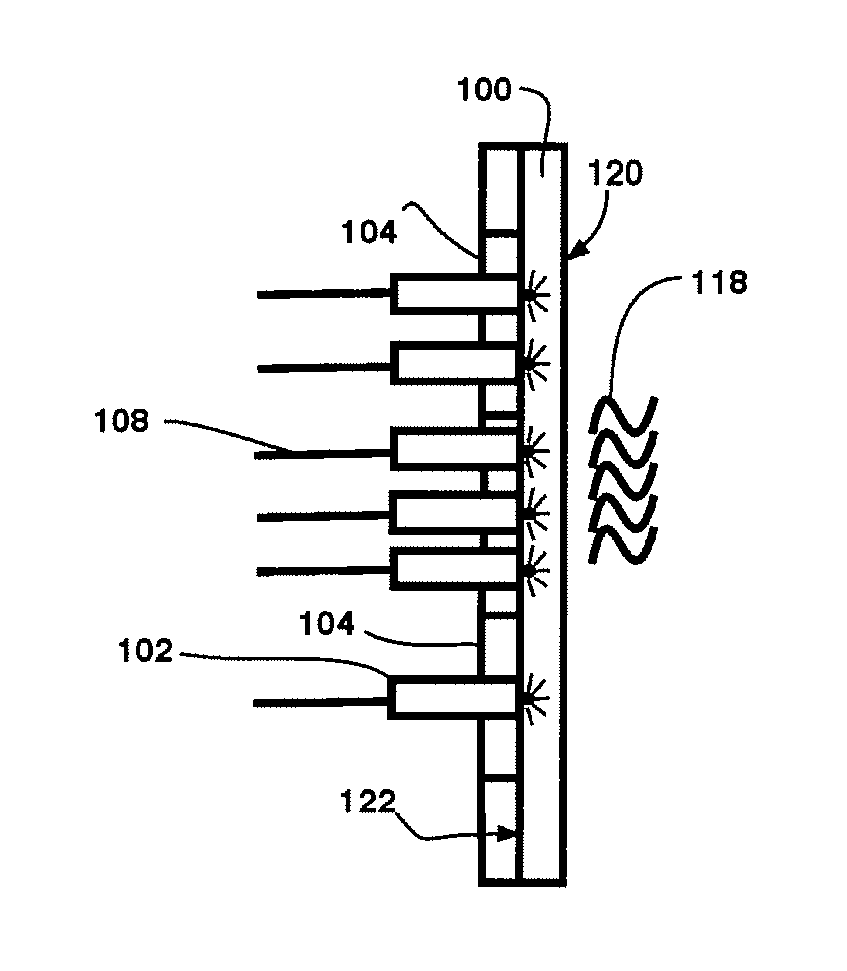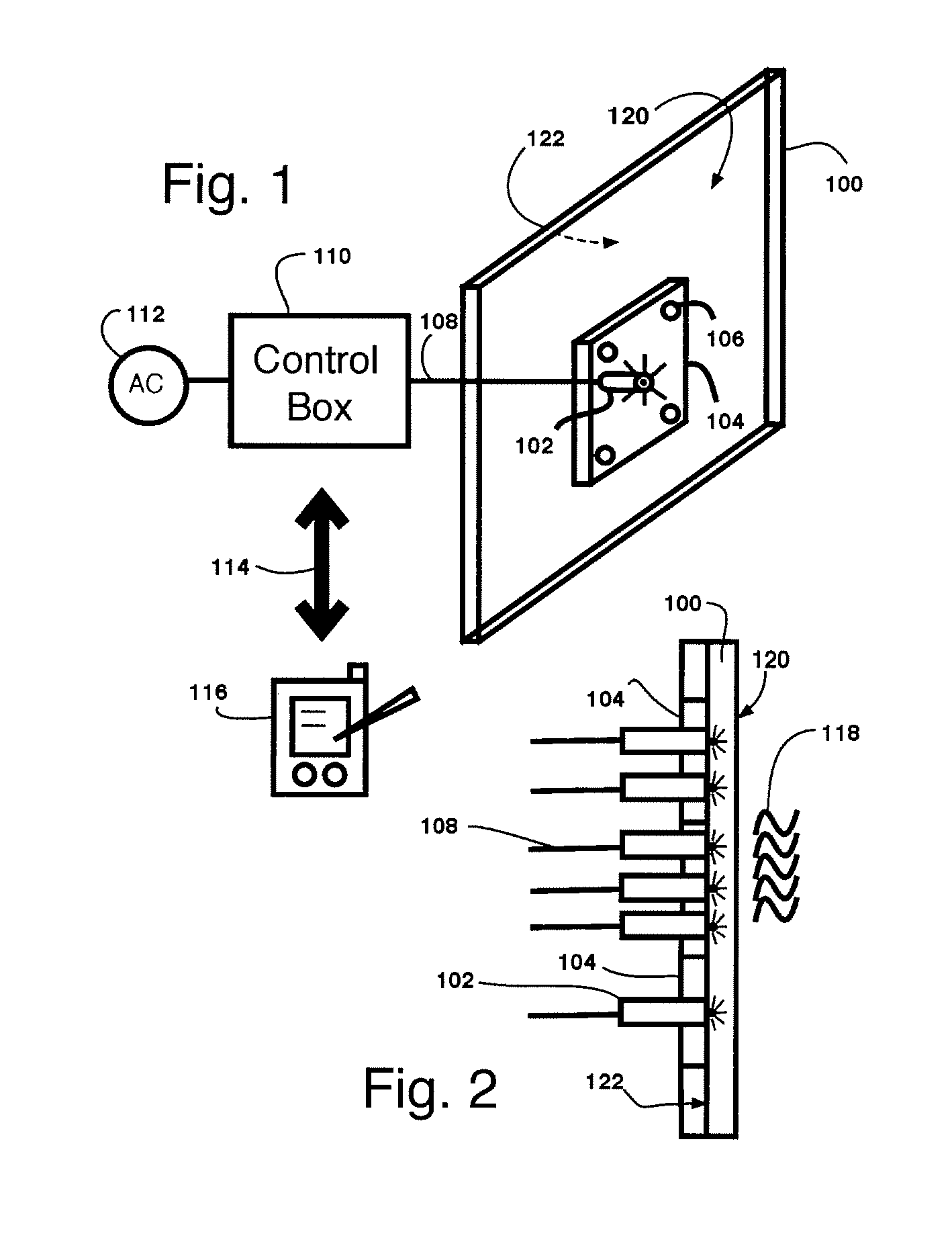Multifunctional Ambient Lighting Compositions
a composition and multi-functional technology, applied in the field of multi-functional compositions, can solve the problems of inability to be useful compositions, etc., to achieve the effect of improving quality, less conducive to bacterial growth, and low useful half-life of titanium dioxid
- Summary
- Abstract
- Description
- Claims
- Application Information
AI Technical Summary
Benefits of technology
Problems solved by technology
Method used
Image
Examples
Embodiment Construction
[0026]In a preferred embodiment in which titanium dioxide is added to the outer polymer, titanium dioxide, preferably in the anatase form, is added to a composition of acrylic polymer (or other polymer composition) containing aluminum trihydrate in an amount effective to ensure complete sterility of the surface when exposed to, at least, low level ultraviolet radiation for an effective time. In a preferred and exemplary embodiment, the titanium dioxide is added to provide a composition containing from 0.1 to 1% titanium dioxide in the anatase form by volume. In another embodiment, the titanium dioxide may be present up to about 1% titanium dioxide but not greater than 1.1%. While these ranges are preferred, other concentration amounts may also be used provided that the concentration is not so great as to cause flaking of the material or clouding of the surface. Concentrations below 1.1% meet this requirement but greater concentration levels are contemplated. Further, in applications...
PUM
| Property | Measurement | Unit |
|---|---|---|
| transparency | aaaaa | aaaaa |
| depth | aaaaa | aaaaa |
| depth | aaaaa | aaaaa |
Abstract
Description
Claims
Application Information
 Login to View More
Login to View More - R&D
- Intellectual Property
- Life Sciences
- Materials
- Tech Scout
- Unparalleled Data Quality
- Higher Quality Content
- 60% Fewer Hallucinations
Browse by: Latest US Patents, China's latest patents, Technical Efficacy Thesaurus, Application Domain, Technology Topic, Popular Technical Reports.
© 2025 PatSnap. All rights reserved.Legal|Privacy policy|Modern Slavery Act Transparency Statement|Sitemap|About US| Contact US: help@patsnap.com



